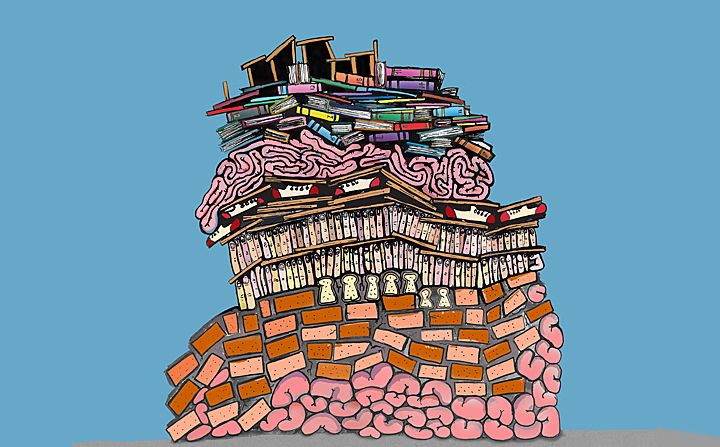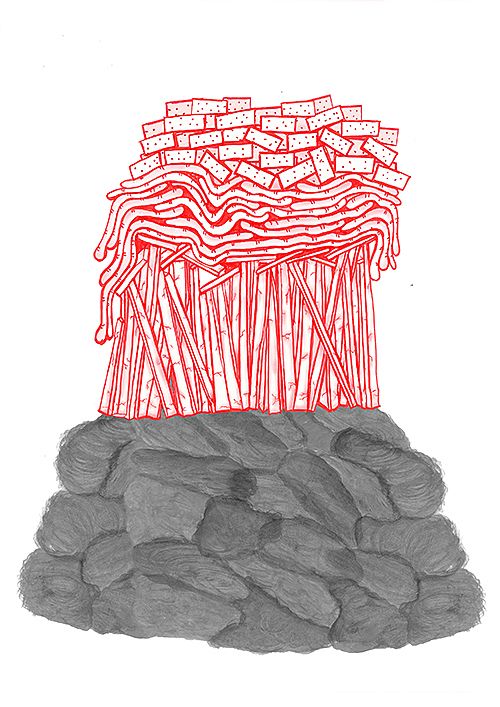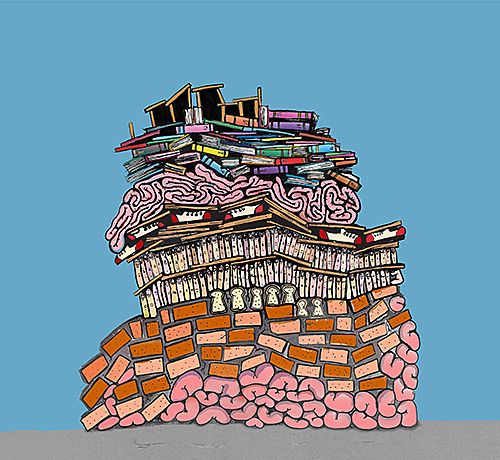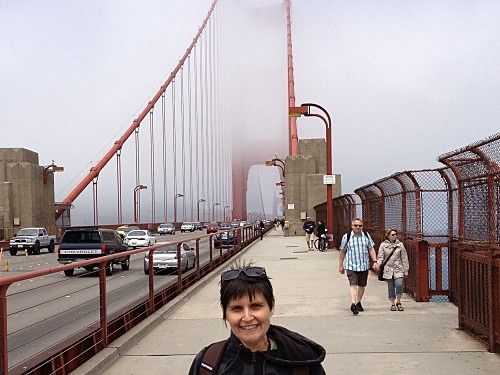At the Service of the Unusual
In engineering, a well-designed building has its own natural rhythm and its own unspoken language of space. Ahead of her first novel being published later this year, Pip Adam shares her experience of learning to write from a world that isn’t hers.
‘Architecture has always represented the prototype of a work of art the reception of which is consummated by a collectivity in a state of distraction’
– The Work of Art in the Age of Mechanical Reproduction Walter Benjamin, 1935.
The manuscript I submitted for my creative writing MA in 2007 was a collection of short stories, most of them autobiographical.
I’d spent the year in a process of ordering up events and people from my past and writing down what I remembered. I quickly realised I had control over these stories. Writing fiction, my stories didn’t need to be recounted exactly as they had played out. I began to change things, sometimes to protect people, often to make myself look better but always to avoid writing confessional or sentimental stories which could be read as memoir. My concentration and control was very firmly on the people and events. Oddly, the physical spaces in which these dissembled projections of my life took place remained largely intact. When I revised the stories, I knew the shape of things exactly. In houses, I knew just where to find a butter knife or a fresh tea towel. In restaurants, I felt the shape of the bathroom key and heard the noise of the traffic outside. When I completed the manuscript, every character sat and moved and lived in places I had; places that came to me fully-formed and complete as I re-read the work.
One of the examiners of the thesis commented, ‘Smaller settings are not really elaborated on – people work in featureless offices or salons, they live in houses made up of blank rooms and fences and gardens, they drive nondescript cars’.
I read the manuscript again and the examiner was right. Because I knew the settings so completely, was so familiar with them, I had put very little effort into portraying them in my stories. They were represented in scant, heartless detail and then only when that detail would help amplify something about the people or the events I created. Of course, I reassured myself, this is where the story is – with the people. But I took cursory heed and while revising the manuscript looked around the rooms and added just enough detail to ensure reality and avoid abstraction.
I spent eight months revising my MA manuscript. During this time I mainly worked in the Victoria University Central Library which is located in the Rankine Brown building on the Kelburn Campus above the Wellington central business district. A couple of mornings each week I would walk up Adams Terrace, climb the steps past the University Crèche and along Fairlie Terrace. In 2008, there was a building site on Fairlie Terrace. I had a vague idea that the building was for student accommodation. I took very little notice of the actual construction but I loved the cranes.
I would try to walk as slowly as I could along Fairlie Terrace so I could see them. They seemed precarious; sometimes the long arm of one would swing round in the wind. One day I saw a man climbing down from the crane. I’d seen the cabs of the cranes empty and I’d seen drivers in them but I’d never seen someone climbing down the ladder inside the tower of the crane. Even though it was the cranes that had caught my attention, I only recognised the potential for a story when I saw the driver taking this brave action. My friend Shaun had driven cranes. He had developed vertigo but continued working on high structures for a couple of years. I started to write a story about a crane driver who was scared of heights. I mentioned it to Shaun and he suggested we meet for lunch and talk about what his job was like. He was an architect now and I met him in a small park, beside a church, opposite a row of multi-storey apartments. I sat with my back to the apartments so I could enjoy the space and the quaintness of the historic church.
The last crane-driving job Shaun had was during the construction of the Otira Viaduct in Arthur’s Pass. He brought photographs of himself, the men he worked with and the bridge they were building. I looked at the men, assuming they were the heart of my story. Shaun explained what it was like, how frightening and cold. He told me men left in the middle of the night rather than work another day. I asked why it was frightening and he said how the work was high, but it was also low, they had to dig deep before they could build high and the viaduct was very high. He paused, trying to think of a way to explain it. Then he said he needed to tell me a bit about how the viaduct was built in the snow in a tiny valley bordered by huge leans of unstable schist, how they ran formwork out over nothing, cantilevered it off what they had finished only days before. I understood only a few of the words and none of the concepts, so I fell back on what I did know – poetics. When he said ‘tensile strength’, I listened to the music of the sibilance; ‘tensile’ summoned up images of flexed muscles and sweat. Shaun talked about piers, and I thought he’d said, ‘pears’ or ‘pairs’ so I made sense of it in an image of two Victorian women eating fruit off a silver tray. I repeated the word back to him, trying to make it my own, playing with the way it felt in my mouth, trying to make it serve my literary aim. Then he talked about concrete: aggregate, fly-ash, slag, cement. I snatched the words as Shaun said them, thinking about all the ways I could break them and put them to work in my story. As I listened, I turned everything he said into material for my work. I nodded and took notes, hiding them so that Shaun wouldn’t stop to correct me or explain further. All I wanted was the words and then only the words as I made sense of them in the context of writing.
Shaun stopped and asked if I understood. I was shocked at the question. I felt like telling him it didn’t matter whether I understood or not. My plan was to transform everything he said to suit my work; the truth behind it was his job, he was the architect not me. He had caught me off guard, though, so I said, no, I didn’t understand. I knew Shaun well, and I knew he would explain again and if I wanted him to keep talking about Otira and cranes, I needed to be able to give him an answer at the end of that explanation which showed I was beginning to understand. So I tried to listen differently.
Shaun went back a step. Did I understand physics? Did I understand how objects resist force? He pointed to the apartments across the road and explained how they stand up. He talked about the relationship concrete and steel has to gravity and ground. I looked at the buildings with an attention I’d never given any built form before. As Shaun talked and I began to understand what he was saying in his terms, I recognised the buildings as I’d never seen them before. They became odd to me. Buildings were objects for my use and when they were of no direct use to me I viewed them as shade, or obstruction, beautiful or ugly. As I listened to what Shaun was saying, everything I knew about them was being undone. Buildings became unusual to me and I realised this oddness was a lot more interesting to me than the things I’d thought about buildings before.
Throughout our discussion Shaun kept talking about engineers. At the time I had very little idea what an engineer did but it was their language Shaun was using. Instead of adapting Shaun’s words into something I understood, something familiar, I wondered what would happen if I put my work at the service of the unusual. If I let the ideas and words of engineering rule my work rather than trying to force them into the shape of conventional fiction. Would I be able to recreate the odd way I had perceived those buildings on that day?
This approach indicated a different type of research. In the past, I’d hung out with people. I’d eavesdropped. In our house, growing up, I don’t remember many books, what I do remember is gossip. My grandmother liked to watch people and listen to people. She and I would spend hours doing this. When I left school and she went into a home, I became a hairdresser, the type of hairdresser who didn’t talk much, because I loved listening and watching. I listened to hundreds of people every week. This position and obsession with observation made me a crafty mimic, able to fake conversations on a number of topics and with a number of different types of people. This had been how I researched my writing. But it seemed this new idea – of trying to let a language lead a story rather than using language as character in a story – meant I needed a new tactic. Where I’d always aimed to achieve mimicry I needed to attain literacy. I needed to find some engineers but I couldn’t just observe them, I needed to come out from the corners and ask them to teach me and test me. I found one engineer in particular, Andrew Charleson. Andrew works at Victoria University School of Architecture and Design. When I first met him he described himself as an engineer who had been ‘acrhictectualised’. He told me, if I was serious, I needed to take some courses he was running about structure.
When I looked up the papers Andrew recommended I read that they offered an ‘introduction to the basic structural principles and material properties that underpin the fabric of natural and constructed environments’. They covered, ‘the basic requirements for structural systems; structural form and proportion; equilibrium; strength of materials; bending and shear; combined stresses; elasticity, plasticity and ductility; elastic deformation; buckling; structural design principles; and, elementary soil mechanics’.
‘I’ll be there,’ I wrote in an email to him.
*
I didn’t know where to wait for the lecture to start. In a couple of months I would understand that well-designed buildings have a natural rhythm to them. That they teach you where people will walk and where people will wait. That they contain spaces of rest and spaces of activity. In a couple of months, I would be starting to get a sense of how to read the structure of a building to get an idea of where these spaces might be. But for now, I didn’t know where to stand or sit to wait. I’ve always been spatially challenged. I’m still unable to tell my left from right, people constantly try to teach me but I think the problem is more about how my mind places me in space. When I put my thumb at a right angle, people tell me, my left hand will make the letter ‘L’. ‘But they both do,’ I say. ‘It all depends which way your palm is facing.’ I am a floating thing not anchored to any magnetic setting. Once inside a building I have no idea where I am in relation to that building as a container. Leaving buildings is always a surprise. So here I milled, outside the lecture theatre, unaware of the story the structure around me was telling, with no sense of where might be a good spot to stand still.
I didn’t want to talk to anyone and I didn’t want anyone to talk to me. I was a lot older than most of the students, so that helped. I also quickly realised that, comparatively, I dress like a slob. The class was made up of an almost equal split of architects and building science majors. Architectural students may be the best dressed people on the planet. Because of the weird retrospective nature of fashion, I often felt like every one of them was in Talking Heads or Kraftwerk or some other equally crisp and divergent ‘new’ band that was about to take the world by storm but for now was just completely certain and practicing in the coolest warehouse in Wellington. The building science students likewise were decked in sharp lines and clean shapes. They seemed to wear a lot of their seriousness in their clothes and my second-hand frocks and big boots looked incredibly out of place.
When it came time for tutorials Andrew introduced me to a few people as a PhD student in, and he would pause here for effect, Creative Writing, I’m not sure anyone ever said it but it often felt like this revelation was followed with a sort of mutual ‘isn’t that weird’? I was weird. My equations often didn’t add up. I had to keep asking about vectors and cosine. I once referred to the steel members of the Bird’s Nest as slender when they’re metres and metres thick. And I continued to get lost, turning left while all the other students on a snake-line round a building site would turn, instinctively, right. But not that weird, I found out. George Saunders was an engineer, so was Fyodor Dostoevsky, Neville Shute, Robert Musil, L. Sprague de Camp, Robert Louis Stevenson, Kurt Vonnegut and Norman Mailer. Also, most of the engineers I talked to had a very wide reading habit. The myth of men reading only non-fiction seemed to be smashed by the engineers I met, a couple of whom wrote short stories and poetry themselves. But I wasn’t an engineer who wrote fiction, I was a writer who was pretending, play-acting at being an engineering student. I realised, two semesters in, I would never fully understand what it was like to be a real engineer. This discouraged me for a while but I then I wonder if perhaps there was some way I could use the margin I was standing in. I’d never fully live in the room of engineering but I’d left the room of writing to stand in the hallway between the two. I could wander into engineering but because it wasn’t my home it would always seem a little odd. I would always be able to see things as a visitor rather than an inhabitant. I would always be getting lost in useful ways and maybe this was more useful to my aim of reproducing the strange way I had experienced the ubiquitous apartments that day I’d had lunch with Shaun.
*
As I attended the lectures I found myself more and more troubled by the word ‘building’ in a way that wasn’t shared by my classmates.
Hearing the word over and over made it strange. I had an idea that the office blocks and apartments we studied in class were permanent, finished, solid and it troubled me that we gave them a name that although obviously a noun, is also a present progressive verb – a continuous activity, a never completed action. It confused my sense of time. The building is here, finished, still, and also in process. The word seemed to carry on some act started by construction workers well after they had left.
To add to this trick of language, I learned that concrete doesn’t reach its maximum strength until many days after being poured; how it is impossible to know whether concrete is as strong as it should be for almost a month after it has been cast, in which time several new storeys may have been built. Even more disturbing to my sense of linear time and what I knew about deterioration, I found out good concrete gets stronger as it gets older. This strengthening happens rapidly to begin with then slows down but, unlike us, concrete’s strength increases with age.
The more I learned, the more distorted space and material became. Everything in my experience to that point suggested that the natural state of an object, like a building, was stillness. The lectures, however, explained that the natural state of an object in the absence of applied force is a maintained velocity or motion over time. Built forms stand still because they are designed so that all forces are held in equilibrium within the elements. I found myself experiencing buildings in a different way. They are alive, in action, a complex relationship of force and reaction to that force happening all at once. I began to see that buildings are built based on how they will be in the future, at another time, when the weight of the building is finished, when the concrete has strengthened, when the full force of the function of the building is imposed and none of this seems fixed, or finished. These future selves are anticipated in the design and so are future events – earthquakes, fire, flood – events out of anyone’s hands and completely contingent. So my strange hearing of ‘building’ begins to fit more and more. The progressive present verb acting as a noun, the most solid part of speech; it is a clever trick which describes exactly what these things are that we live and work in – at once still and moving, here and at another time, finished and finishing.



